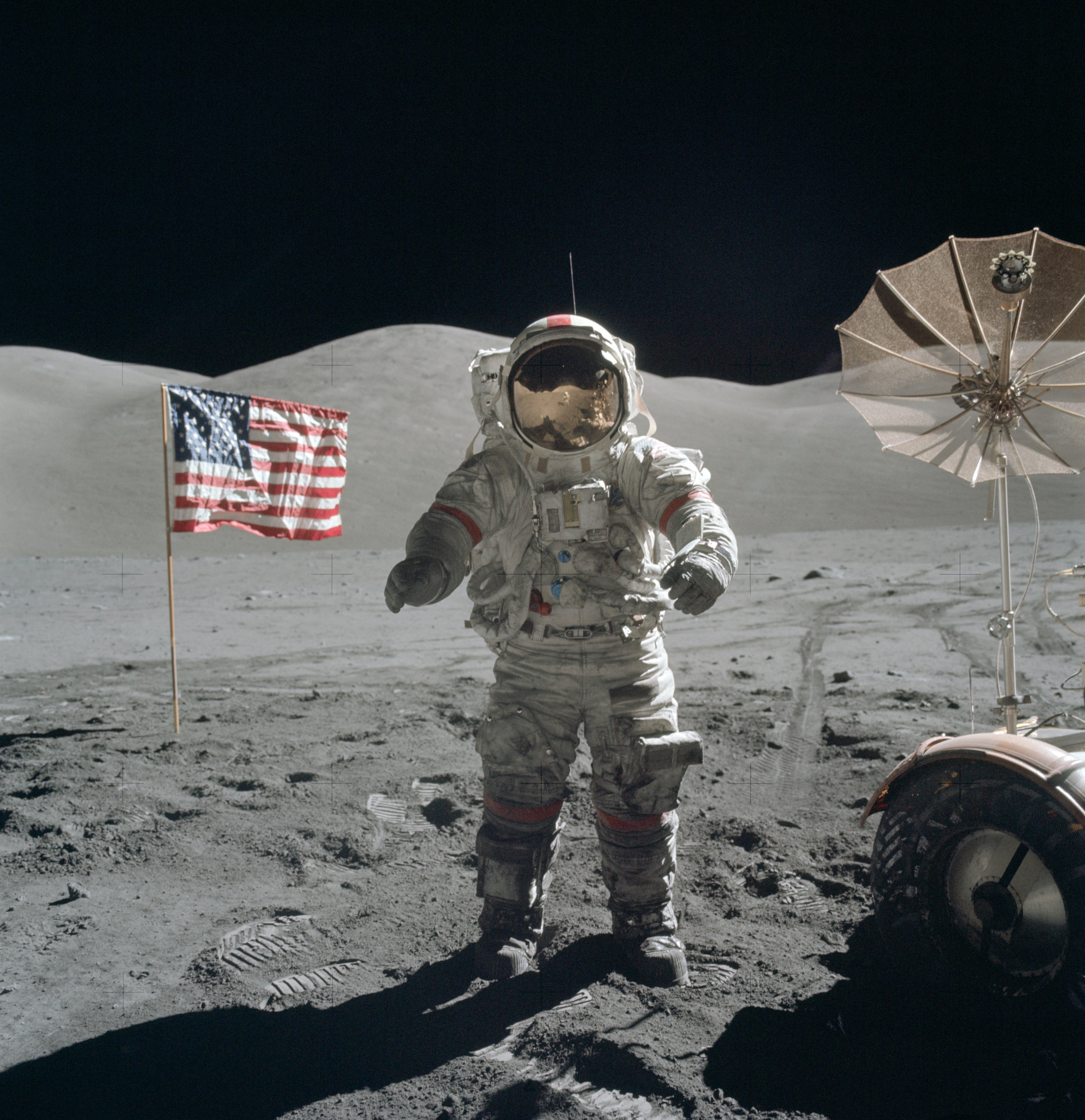 Forty years ago today, a Purdue alumnus (BTFU!) stepped off a ladder and into history. And yet last week the Obama administration had to hedge its bets regarding whether or not we’re going back – ever.
Forty years ago today, a Purdue alumnus (BTFU!) stepped off a ladder and into history. And yet last week the Obama administration had to hedge its bets regarding whether or not we’re going back – ever.
It’s easy to be pessimistic about designs so grand they almost elude comprehension. In an era of staggering deficits, it’s even tempting to subscribe to a view of manned space flight as a boondoggle. But like democracy, an awareness of humanity’s future in space is destined to spread. It lurks beneath the surface of the cultural zeitgeist, and cannot be suppressed indefinitely. So yes, we will be going back to the moon, not because we can strip-mine it for water, or because it’s a natural location for an amusement park, but because every man, woman, and child on the planet looks up and knows that we have been there. The legacy of Apollo is not Velcro and Tang, but hope.
Apollo was never meant to be a scientific mission; rather, purely scientific objectives were allowed so long as they didn’t interfere with the program’s political goals. The entire mission architecture was built to support ludicrously brief lunar stays (from Apollo 11 at less than a day to Apollo 17 at just over three), and landed only one trained scientist. We left some instruments, picked up some rocks, and yes, hit a few golf balls – and then we left. Thirty-seven years later, despite all that the moon could teach us, we still haven’t been back. Because science wasn’t the point.
Apollo was exploration in the grandest human tradition. It was, to quote Kennedy, “the most hazardous and dangerous and greatest adventure on which mankind has ever embarked.” It strained, then broke and reset the limits of what technology could accomplish. It claimed the lives of five astronauts, and in perhaps the greatest demonstration of engineering prowess of the 21st century, failed to claim the lives of three more – and had someone been able to tell them that in advance they still would have volunteered. Four decades later, we would still volunteer.
I can’t listen to that recording of Walter Cronkite without getting goosebumps. Sometimes I can’t even listen to it with dry eyes. I don’t even know that I can fully explain why this date means to much to me. I feel a (admittedly, largely unjustified) kinship with astronauts. For as long as I can remember I’ve harbored a desire, bordering on an assumption, that I should go into space. Four of the thirty-eight Apollo astronauts were Purdue alumni, and I’ve had the honor of meeting both the first and the last men to set foot on the moon. (That’s Cernan below, in one of the nineteen images used in a Wikipedia article literally titled the History of the World.) Perhaps it’s simply the ultimate expression of wanderlust; like Alaska two hundred years ago or America two hundred years before, the moon remains just over the horizon: attainable, but only at tremendous expense.
When I look at photographs from the moon, the first thing I notice is always the striking degree of clarity. It is literally, and magnificently, otherworldly. On earth objects become less distinct as they move further away; it’s the price you pay for having an atmosphere. But a man on the moon, standing there surrounded by nothing but dust and radiation, can see forever. Twenty-four Apollo astronauts remain the only human beings to have truly left the earth. Twelve of them left their awkward, bulbous footprints on the surface of another world, footprints that will remain long after our species is gone. Those twelve flirted with immortality. They came as close as any man could to touching the face of God.
But did they really have to leave a note up there from Richard Nixon?


To me, the really freaky thing is that there are almost twice as many people on earth now as there were when this photo was taken.